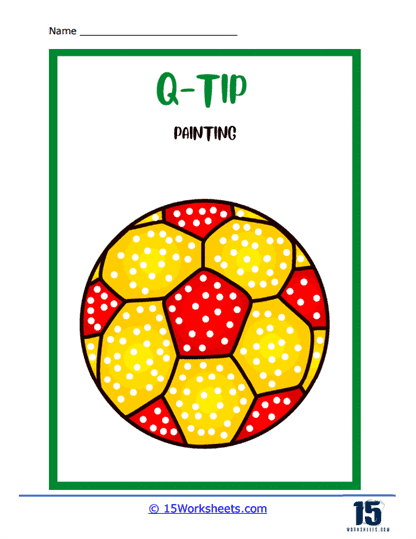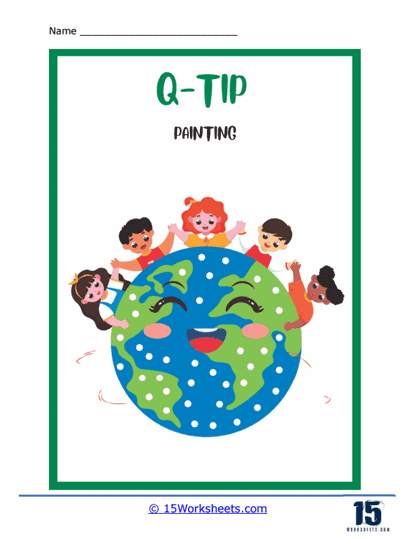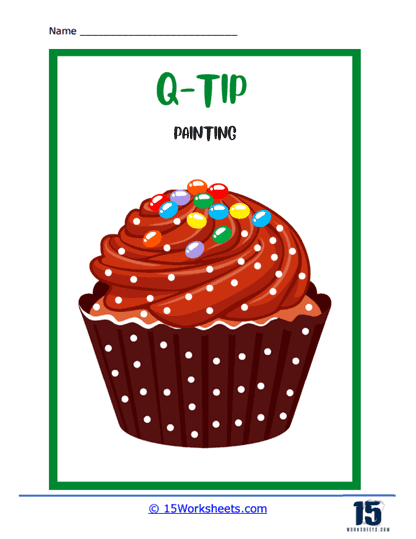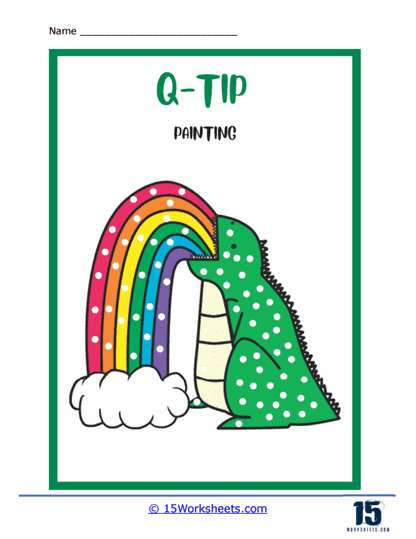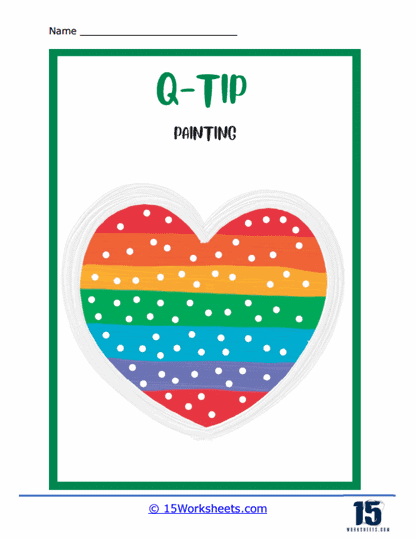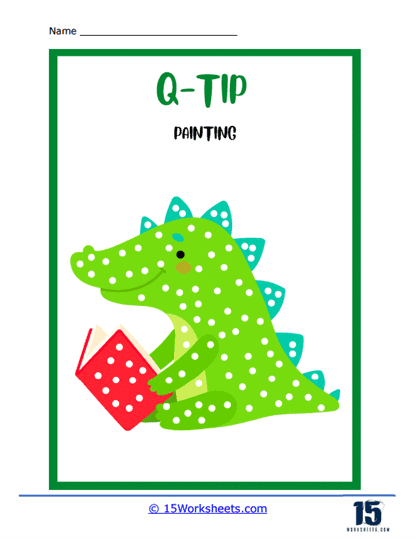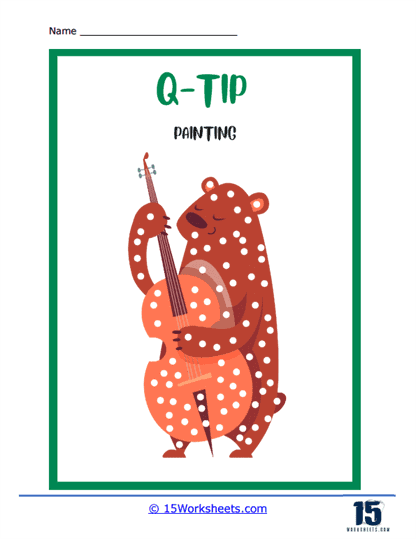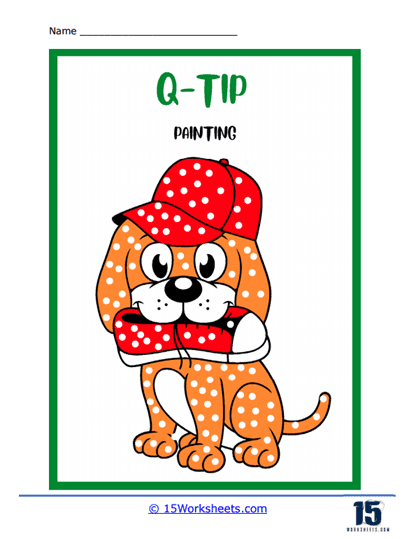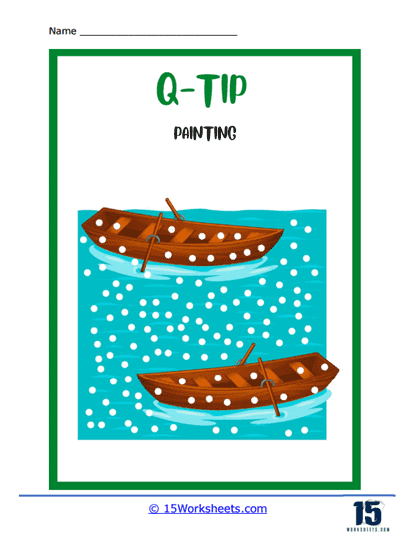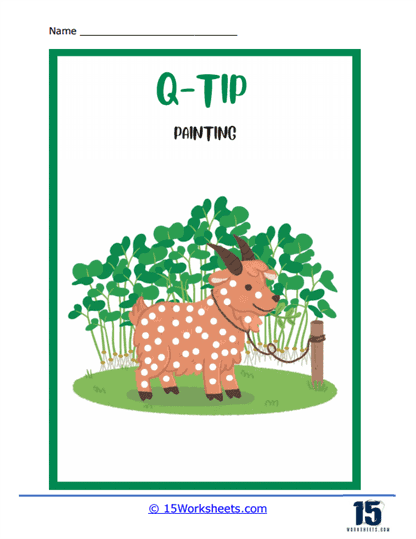Q-tip Painting Printables Worksheets
All About These 15 Worksheets
Preschool is a pivotal stage in a child’s development, characterized by rapid cognitive, social, and physical growth. Engaging activities that promote creativity, enhance fine motor skills, and encourage early learning are essential for laying a strong foundation for future academic success.
This collection of Q-tip Painting Printables worksheets for preschool students provides a valuable resource for educators and parents to engage children in interactive and artistic learning experiences that not only foster creativity but also promote fine motor development, color recognition, and hands-on exploration. These worksheets offer an enjoyable and sensory-rich approach to learning that inspires artistic expression, curiosity, and a lifelong love for creative endeavors.
What Is Q-tip Painting?
Have you ever seen or used a Q-tip, also known as a cotton swab? They’re small sticks with cotton at both ends. They can be used for many things, but did you know you can even use them for painting? That’s right! It’s a fun and exciting way to paint, and it’s called Q-tip Painting.
They’re like your normal coloring sheets, but instead of using crayons or markers to fill in the pictures, you use Q-tips dipped in paint. These printables can have all sorts of designs, like animals, letters, numbers, shapes, and many other fun things.
You just need to dip a Q-tip into your favorite color of paint, and then dab it onto the printable. It’s a bit like dot painting. You can fill in a whole picture with tiny colorful dots, or you can make patterns or lines. The possibilities are endless!
Benefits Of Q-tip Painting To Preschool Students
One of the first benefits is that it can help you improve your fine motor skills. Remember how we talked about fine motor skills with playdough? These are the small movements that use your hands, fingers, and wrists, and they’re very important for writing, typing, and many other things. When you hold a Q-tip and carefully dab it onto the paper, you’re practicing these skills!
Q-tip painting also teaches you about color and creativity. You can mix colors to see what new colors you can make, or use different colors to make your picture look really cool. This is a great way for you to explore and express your artistic abilities.
Cotton tip painting also helps you learn patience and concentration. Each dot you make with a Q-tip is small, so it takes time to fill in a whole picture. You have to focus and take your time to make sure each dot goes where you want it to go. This can be a calming activity, and it can also help you feel proud when you see the beautiful picture you’ve created by being patient and focused.
For toddlers, Q-tip painting can help them develop their hand-eye coordination. This is the ability to coordinate what you see with how you move your hands. When they see where they want to place a dot of paint, and then move their hand to put it there, they’re practicing this skill!
Q-tip painting also introduces toddlers to the concept of cause and effect. This means they learn that their actions have results. When they dab a Q-tip in paint and then press it onto paper, a colorful dot appears! They’ll realize that they made that happen, and it can be really exciting for them.
These activities can also help with sensory exploration. Toddlers learn a lot about the world by touching, seeing, and doing things. When they touch the soft cotton tip, dip it in the wet paint, and press it onto the paper, they’re learning about different textures and sensations. This is an important part of their learning and development.
Using these printables with letters, numbers, or shapes can help toddlers learn these concepts in a fun and engaging way. Filling in the shapes or outlines with the Q-tip and paint can make learning these symbols more interactive and memorable.





